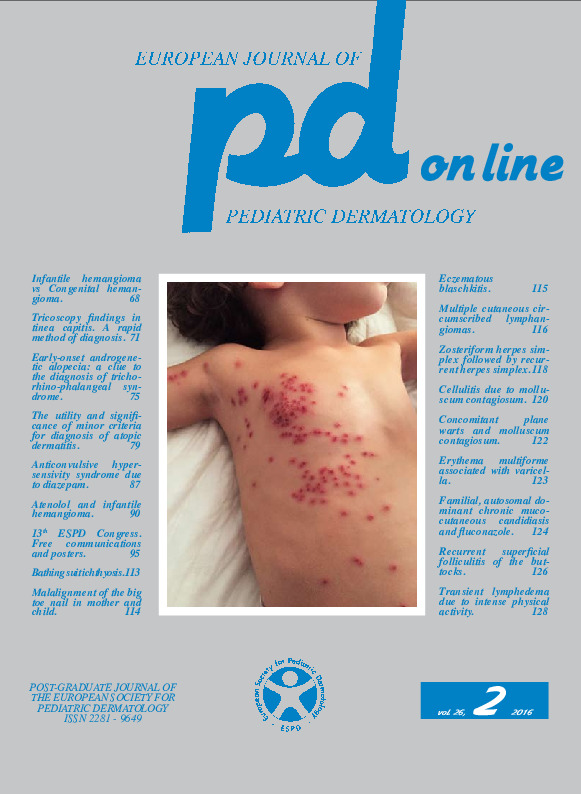Recurrent superficial folliculitis of the buttocks.
Downloads
DOI:
https://doi.org/10.26326/2281-9649.26.2.1240How to Cite
Bonifazi E. 2016. Recurrent superficial folliculitis of the buttocks. Eur. J. Pediat. Dermatol. 26 (2):126-7. 10.26326/2281-9649.26.2.1240.
pp. 126-7
Abstract
The literature on the superficial folliculitis of the buttocks and thighs has especially highlighted the acute forms caused by Pseudomonas aeruginosa (2, 3, 4) or methicillin-susceptible Staphylococcus (1). In both cases we are dealing with acute, non recurrent episodes; the former are most frequently linked to the popular water plays in the US and are due to water pollution with Pseudomonas aeruginosa, thus more often interesting many subjects involved in the game.On the other hand, our cases affected single children with chronic-recurrent course. In our case the role of infectious factors is questionable: the isolation of Pseudomonas aeruginosa and Staphylococcus aureus is frequent; however, being these bacteria commensal of the skin, it is difficult to envisage their pathogenic role. Moreover, since the course of this disorder is chronic-recurrent with subintrant crops, it is not easy to assess the therapeutic significance of antibiotics, unless, as in our case, recurrences intervene precisely during the administration of antibiotics.
Our cases intervene in the age of primary school in single subjects; they are not epidemic; they do not occur as single acute episodes, but instead are chronic-recurrent for months or years; they are not accompanied by itching, but when deeper, folliculitis can make sitting position painful; the bacteriological examination can be positive for Pseudomonas aeruginosa or Staphylococcus aureus; however, antibiotics are not effective; our cases affect immunocompetent individuals; hyperhidrosis seems an important pathogenic factor; there may be follicular keratosis; in parents you may find minimal folliculitis of the buttocks.
Keywords
Recurrent superficial folliculitis, Buttocks

